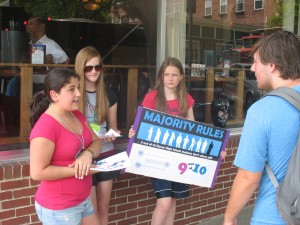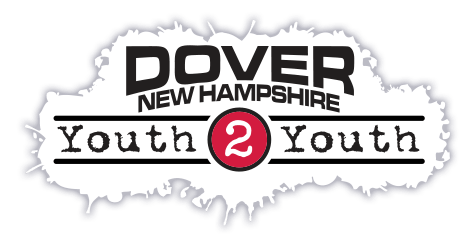Activism and Advocacy
Activism & Advocacy

The focus of this training is on planning a large community informational demonstration on a specific topic or issue. Often communities receive this training by sending their youth or staff to the Dover Youth to Youth Summer Advocacy Training Camp.
An Advocate is someone who speaks out or supports a particular position, issue or cause. Writing a “letter to the editor” to encourage people to support a local recycling effort would be advocating for that cause.
Activism, or being an activist, implies a more aggressive and/or “hands on” effort to promote a position, issue or cause. Picketing a factory to draw public attention to the fact that they are dumping waste into a river would be an example of activism.
Civil Disobedience is activism where individuals break the law to make a point about a condition or issue that they feel is wrong. When Rosa Parks refused to give up her seat to a white man on a bus in Alabama, she was committing civil disobedience because she was violating the law in effect at that time, and she was arrested.
The students of Dover Youth to Youth are both activists and advocates. As a matter of policy, they do not engage in civil disobedience to make their position known. In fact, we emphasize the value of not giving your opponent anything to point to and say “look how out of control these kids are”. We don’t want to give those who disagree with us anything that they can use to distract the public from our actual message. In other words, we keep the debate and discussion on our position and not our behavior.
Activism Skills is a term that describes a range of skills that would be used by youth to organize a large number of students to engage in an informational demonstration, a public protest, or similar street-level advocacy campaign or event.
Activism Skills:
- Filing for a permit and/or getting permission. Might not seem like a skill but it is critical that students get used to dealing with the adults that can sanction your efforts. If you are protesting someone else’s behavior – it is particularly important to not be violating the law. To do so risks a distraction from your message while you defend why you were demonstrating without a permit or perhaps trespassing.
- Working with the mass media/press.
- Creating and using signs. Signs are a low tech and cheap means of communication if you are talking about white poster board and some color markers, but there is definitely a right and wrong way to do it.
Sign Making Tips:

- Hand-crafted signs don’t need to be perfectly artistic, but they shouldn’t look carelessly and sloppily made either.
- Color is good, but that can be overdone to the point of being distracting.
- The message must be short and concise.
- Signs must be readable. Individual letters must be wide and bold. Words and letters shouldn’t be scrunched together so that they blur into one another.
- Creating and using large visuals. Large visuals help to get your message out in a different way and can provide a level of humor and interest in what you are doing. Creativity in packaging your message is the key to success here. In the Dover Y2Y Fridge Campaign we created a full-size refrigerator out of cardboard to use at public events and at speaking engagements. In a demonstration about the tobacco industry targeting kids in their promotions, we made a giant 10 x 10 foot bull’s-eye-style target with kids faces in the center.
- Creating and performing chants. Chants get the public’s attention to what you are doing and can convey short “sound bites” that represent the core of your concern. They also serve to develop a sense of teamwork and group connection to the issue.

Activism Skills - Developing and handing out a palm card. Palm cards are small sheets of paper (often 8 x 5, or 3 x 5) that summarize your position and concerns on an issue. These are then passed out at an event or during a demonstration to pedestrians. Like many things, there is a correct way to do this and guidelines for how not to do this. This includes such things as practicing how to approach a pedestrian, practicing how to explain your issue if the pedestrian stops to take your palm card, and insuring students don’t block the sidewalk, get pushy or become a nuisance to people who are not interested.
To request a presentation of Youth Activism & Advocacy by Dover Youth to Youth go to How to Schedule Us in the Resources section of this web site.




